In 1945, returning veterans at the end of World War II caused enrolment to almost double at the University of Saskatchewan. As a junior college, the U of S Regina Campus began offering first-year engineering courses to help alleviate overcrowding at the northern institution. This year marks the 75th anniversary of what is now known as the Faculty of Engineering and Applied Science.
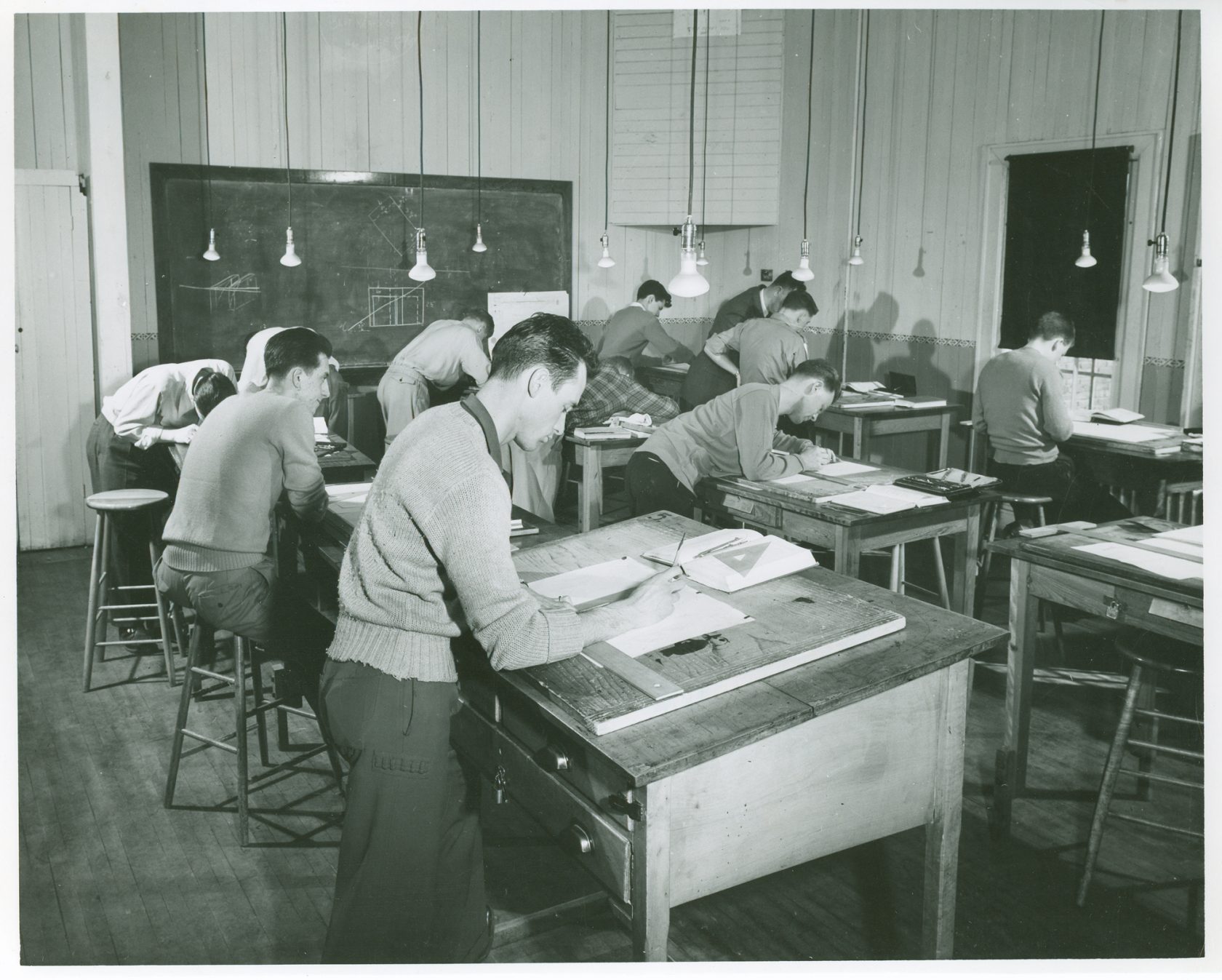
An uncanny quiet descended over the globe in mid-March of this year, as governments and public health agencies everywhere issued stay-at-home orders in response to the global COVID-19 pandemic. Activities on the usually bustling campus of the University of Regina came to an abrupt halt, disrupting the familiar rhythms of the school year. The sudden and unexpected end to in-person classes and the transition to online course delivery came as the U of R’s Faculty of Engineering and Applied Science was marking its 75th anniversary.
“Within a week everything changed,” is how Nicole Rodgers, a fourth-year Environmental Systems Engineering student and president of the Regina Engineering Students’ Society (RESS), sums it up. The story of the lockdown and the ensuing transition to online learning will become another memorable milestone in the history of the engineering program in Regina at some future date. In the immediate aftermath of the lockdown, however, the focus for students and academic staff members was on adapting to teaching and learning in new ways. Rodgers and her fellow students shared many uncertainties: how courses and labs would be delivered; how assignments would be completed; and the status of the classes they were currently completing. “I was wondering what all of that would look like,” she says.
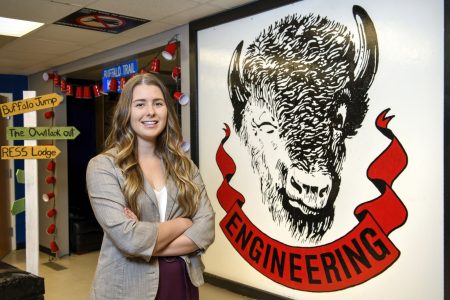
Esam Hussein, dean of the Faculty of Engineering and Applied Science, faced those same questions. He and fellow faculty members held a series of online meetings to discuss how to adjust best practices in teaching, assessing, examining and monitoring attendance using platforms like Zoom. The Faculty’s Academic Assembly, now conducted online, regularly discusses methods of course delivery and lab work. “We learned how better to prepare exams and quizzes, and how to design projects for our students,” Hussein notes.
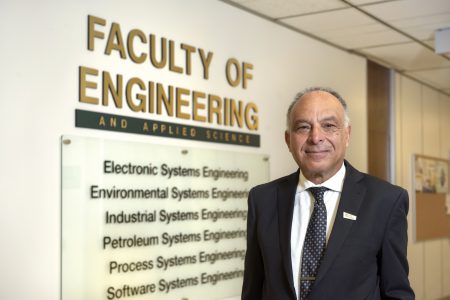
After organizing a quick pivot to online course delivery, David deMontigny BASc’96, MASc’98, PhD’04, the associate dean (Academic), led an online town hall with students to explain how their courses would be delivered and to answer their questions.
One of the immediate decisions he had to make, Hussein explains, was either to cancel Project Day—an important event for fourth-year students, and their family and friends—or offer it in a modified form. Project Day is usually a one-day public event where students present their final-year design projects, known as capstone projects, in concurrent sessions. Hussein decided to cancel the face-to-face event and asked each of the five program chairs to devise a way to hold Project Day at a program level. This year, student presentations were hosted online and spread over several days, with practicing engineers helping evaluate the projects. “The program chairs handled it very well,” Hussein says. “We will likely handle Project Day that way until it is safe to return to face-to-face.”
In 1934, Regina College affiliated with the U of S and was renamed University of Saskatchewan, Regina Campus. It was in this role as a junior college that it began offering first-year engineering courses in 1945-46 to help alleviate overcrowding at the University of Saskatchewan.
One of the questions faced by people everywhere, of course, is what happens when you don’t have that face-to-face interaction with people outside your immediate circle? The Faculty is doing whatever it can to build community by encouraging meaningful interactions between students and staff, and among students, Hussein says. Rodgers admits she misses being around her classmates and having informal chats with her professors after class. As RESS president, she has led the efforts to move events online to promote the social aspect of university life. “It is important, especially for first-year students, to make those connections,” she says.
Despite the pandemic, the Regina Engineering Students’ Society continued to organize activities, including the September Engineering 1-4 event, where practicing engineers provided students with information about their work experiences and advice on job hunting.
The next major advance occurred in 1966, when Regina Campus began offering second-year courses under the aegis of the newly-created College of Engineering (re-named later as the Faculty of Engineering).
The pandemic is by far the greatest challenge the Faculty has faced in its history, but certainly not the only one. Growing up in the shadow of the larger program in Saskatoon, the U of R Engineering program has had to work hard to build its own identity. The U of R traces its origins to Regina College, which was established in 1911 as a residential high school. In 1934, Regina College affiliated with the U of S and was renamed University of Saskatchewan, Regina Campus. It was in this role as a junior college that it began offering first-year engineering courses in 1945-46 to help alleviate overcrowding at the University of Saskatchewan. The influx of returning veterans at the end of World War II had caused enrolment to double almost overnight. Under this arrangement, students in Regina still had to move to Saskatoon to complete their degree from the University of Saskatchewan.
The next major advance occurred in 1966, when Regina Campus began offering second-year courses under the aegis of the newly-created College of Engineering (re-named later as the Faculty of Engineering). Included with this move was a promise that third and fourth-year courses would be added at some indeterminate future date when an engineering building was built. At the time, classes were held on what is now the College Avenue Campus, which consisted of the original College Building and a few other buildings added later.
Harald Berwald began working in what was called the Science Building on the original campus in 1971. He was a tool and die maker, responsible for designing, building and creating devices or apparatus needed by professors, researchers or lab instructors to explain concepts or develop projects. The shop was so under-equipped at first that Berwald brought his own tools from home. He retired 43 years later, having witnessed decades of changes in the Faculty and the University. “It was interesting work with interesting people,” Berwald says, “although sometimes what I had to work with—literally—was a sketch on a napkin.”
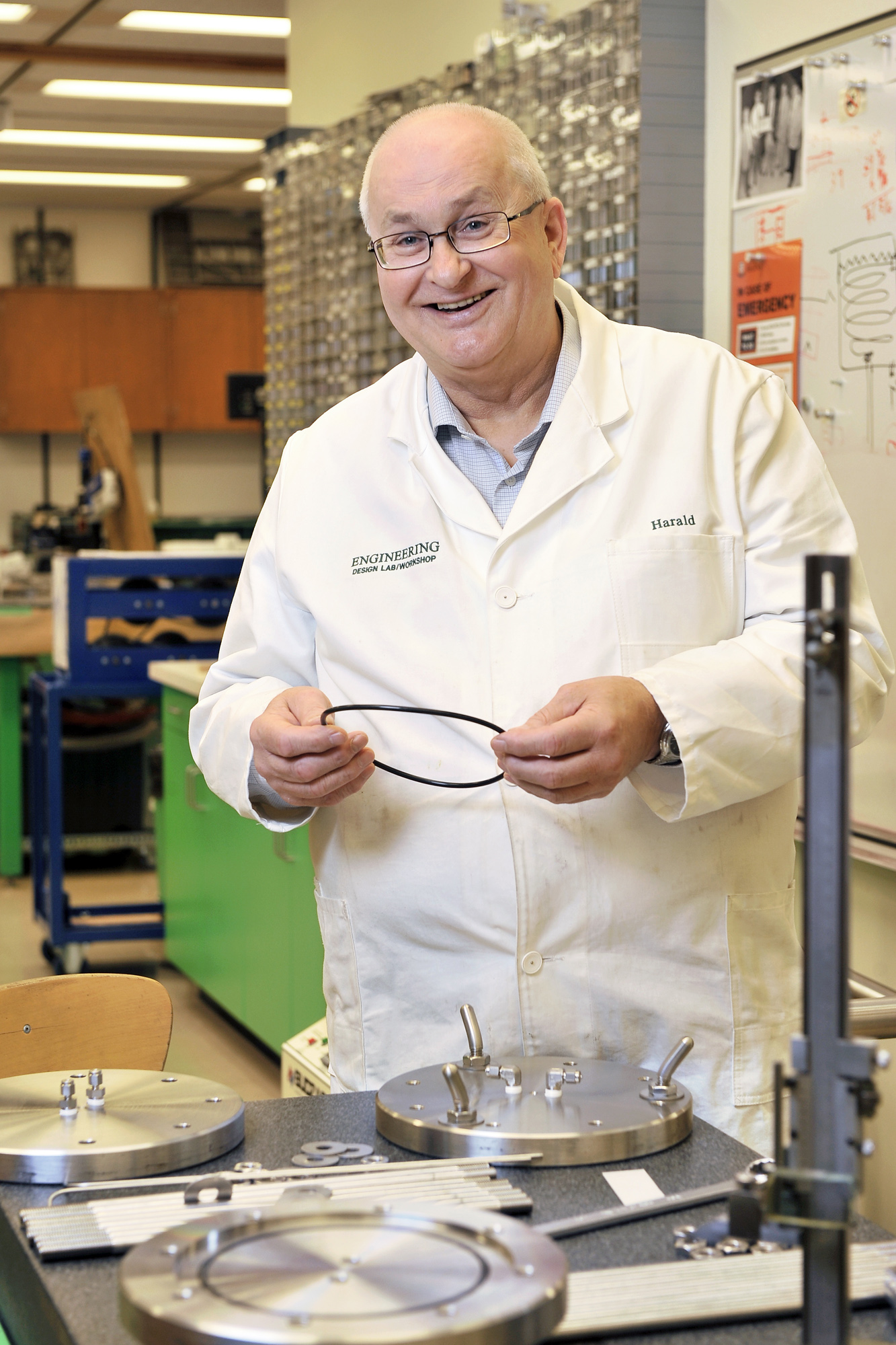
Elevating the status of the engineering school, even though only the first two years were offered in Regina, raised questions on the sensitive subject of having two engineering programs in one small province. The principal of Regina Campus, William Riddell, addressed the question by stating that the fields of specialization offered in Regina would complement—not duplicate—the programs offered in Saskatoon. In 1969, the first dean of the newly-created Faculty, John Mantle, and his colleague Cameron Blachford, further differentiated the program by founding a co-op program, where engineering students would spend one semester doing practical work in the engineering field for every two semesters spent in the classroom. Regina was among the first schools in North America to implement such a program, and the first in Western Canada. It has been an unqualified success.
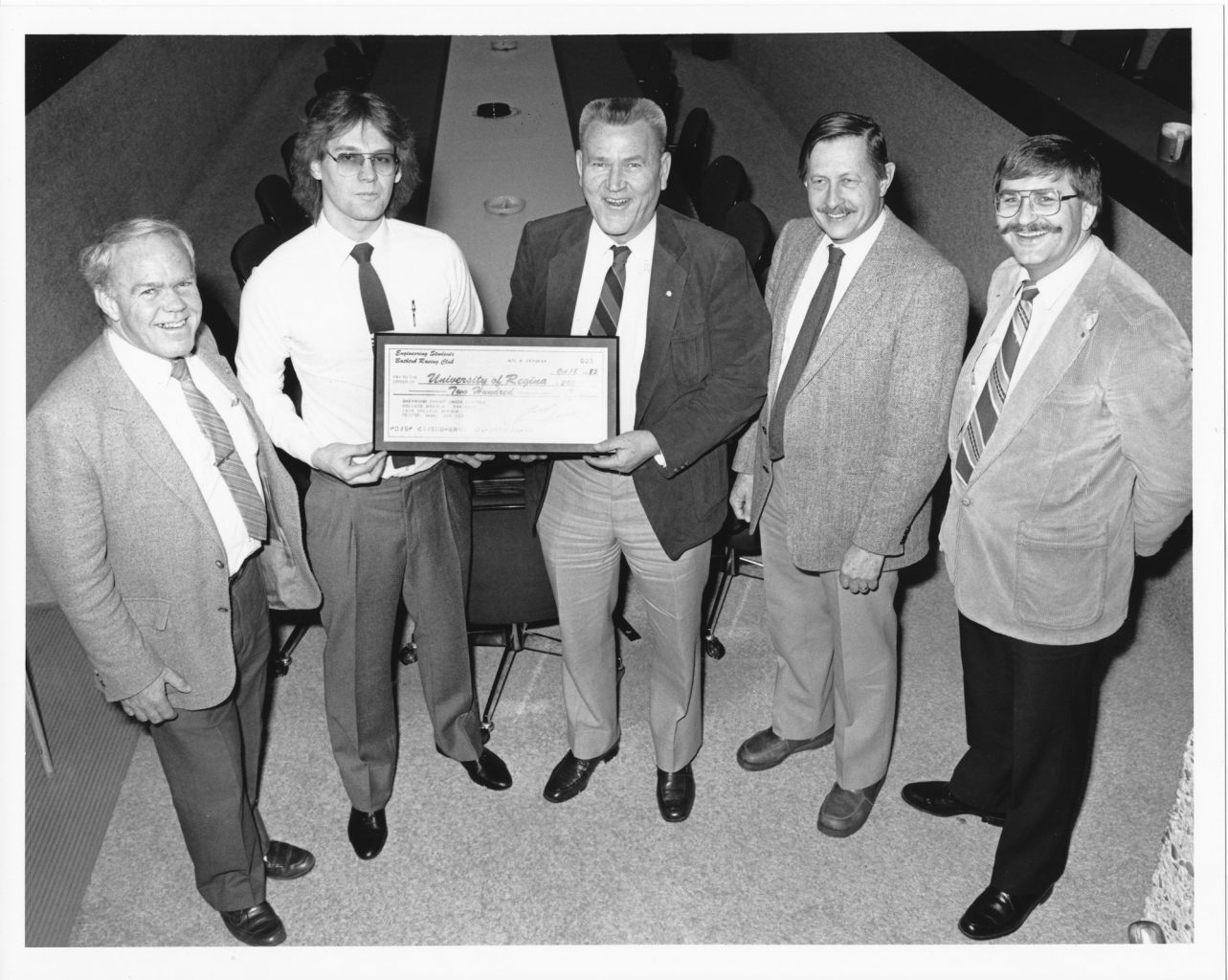
Art Opseth, who began his distinguished teaching career in 1974 and served as the co-op coordinator for engineering students, says he could tell which students had completed a work term. “They had a more realistic view of their studies and they tended to do better in the classroom,” he observes. Simi Falaye BASc’18, who received his degree in Software Systems Engineering in 2018 and participated in four work terms, credits the co-op program for improving his confidence in preparing for job interviews, practising his technical skills and interacting with other professionals.
Art Opseth enjoyed a long and distinguished teaching career in the faculty beginning in 1974. He also served as acting dean and assistant dean and is currently a member of the U of R Board of Governors. (Photo by Don Hall)
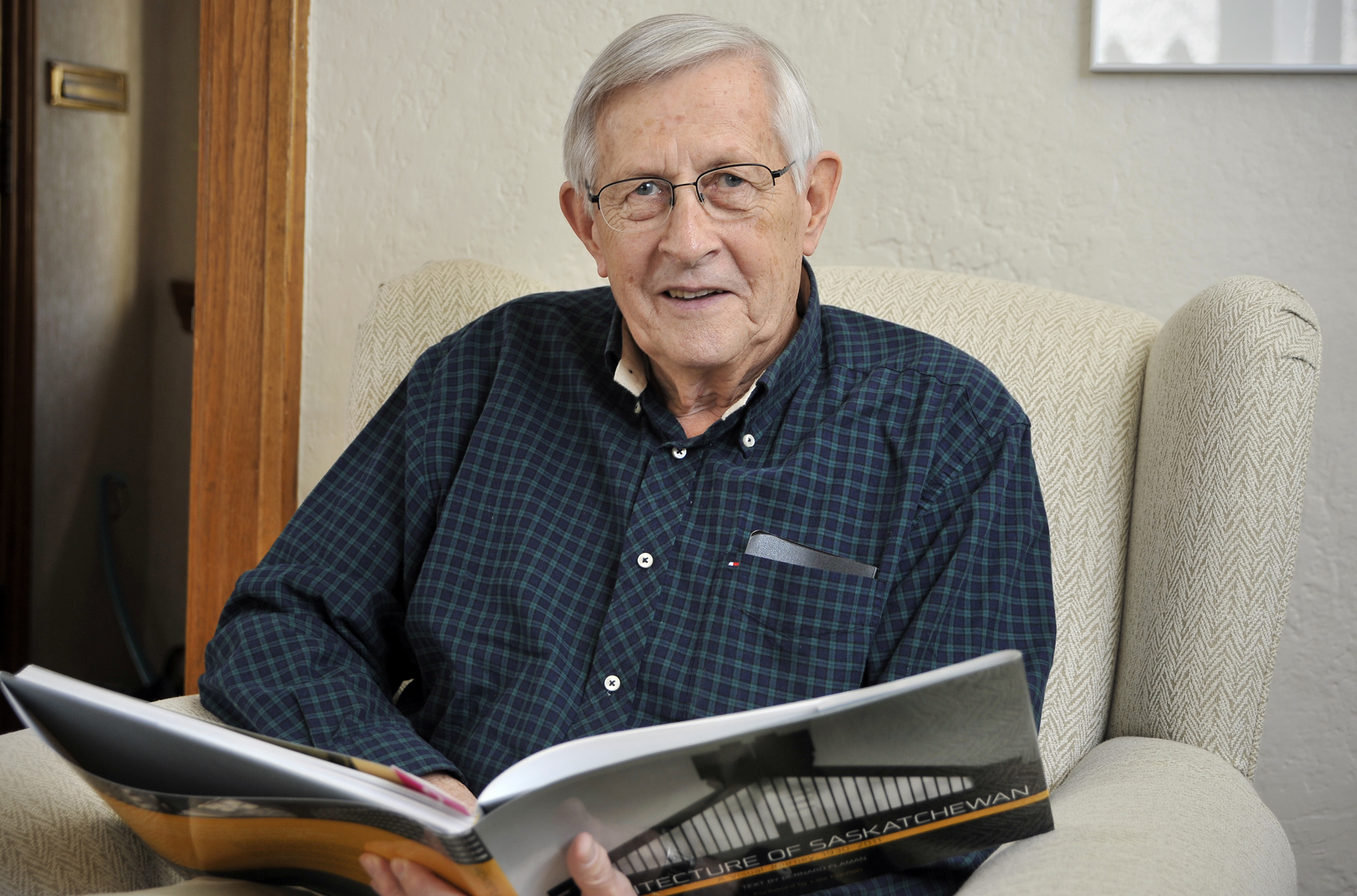
The program (now called the Co-operative Education and Internships program) has evolved to become a stand-alone program available to U of R students in many faculties. The annual Mantle-Blachford Award, created to honour the co-founders, provides a scholarship to the co-operative education student of the year.
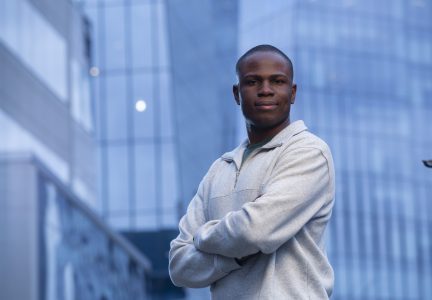
Despite the moves made to establish a distinctive program, the program suffered a setback in the 1970s. Instead of advancing toward offering four years of courses, cutbacks in provincial funding cast doubts on the program’s very existence for a while. One consultant recommended it be shut down, but the Board of Governors rejected that idea. Another study recommended that Regina specialize in industrial and electronic systems engineering. Opseth, who currently sits on the University’s Board of Governors, strongly believed that the program should continue. “We had work study and systems engineering, and good, hardworking people in the Faculty,” he says. “With the systems approach, we had the broad, comprehensive aspects of engineering, while in Saskatoon they studied the depths of things. They did complement each other.”
Looking back, Hussein adds, the suggestion that the College adopt a systems concept was significant. “Adopting systems programming was very forward-looking. Events have shown that the systems approach is a very effective way of looking toward how the future of engineering is practised.”
Many graduates of the U of S, Regina Campus completed their degrees under the “two-plus-two” arrangement that continued until the 1980s. Carlyle Murray BASc’81 was what you might call a mature graduate, taking classes on a part-time basis while he worked as a civil engineering technologist for engineering firm R. J. Genereux and Associates. “There were projects where a recent graduate engineer and a technologist with practical field experience were on a construction site together,” Murray observes. “That gave me the financial incentive—along with support from my wife and my employer—to pursue a degree in engineering to advance my career and increase my earning power.”
Murray graduated in 1981 with a degree in Regional Systems Engineering, Transportation Option. In total, he worked for Genereux for 25 years. His next position was with the City of Regina. He is currently employed by Stantec Consulting.
Gary Bosgoed was another student who began his studies in Regina before transferring to Saskatoon, although he was happy to return to Regina to receive his degree in Industrial Systems Engineering in 1983. Bosgoed, who operates a consulting business and sits on the University’s Board of Governors, urges students not to race through to receive their degree, but to take multiple co-op work terms. “The work terms become foundational,” he states. “They are the best sweet spot of the learning curve. They are how you acquire a sense of how teams work.”
Bosgoed says being an Indigenous student in the 1970s wasn’t a topic, and that the University is doing a great job of Indigenization on campus, with more supports and programming. However, perhaps reflecting his entrepreneurial background, he would like to push the U of R further to build more relationships with Indigenous businesses and encourage more Indigenous graduates to be entrepreneurs and wealth creators.
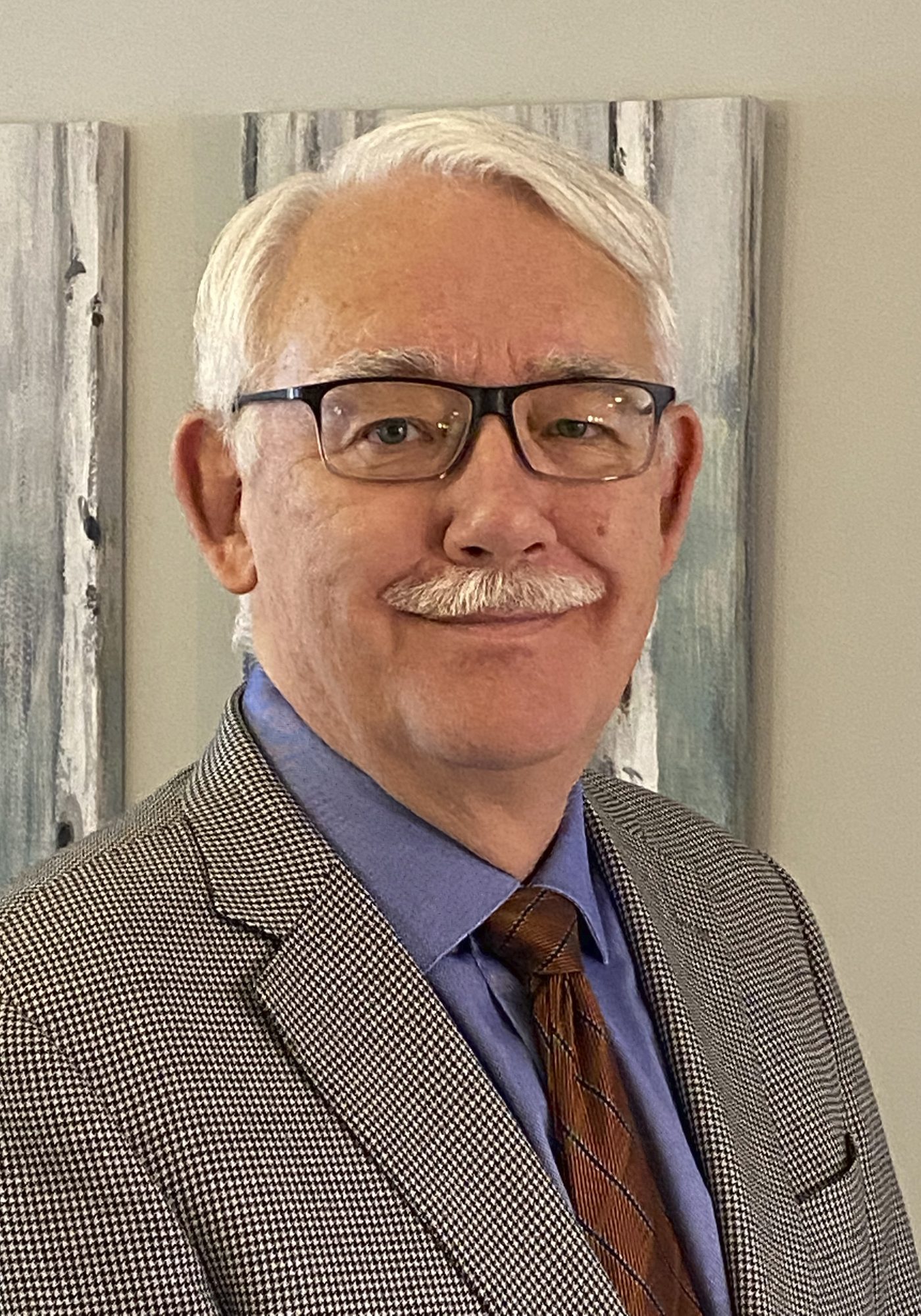
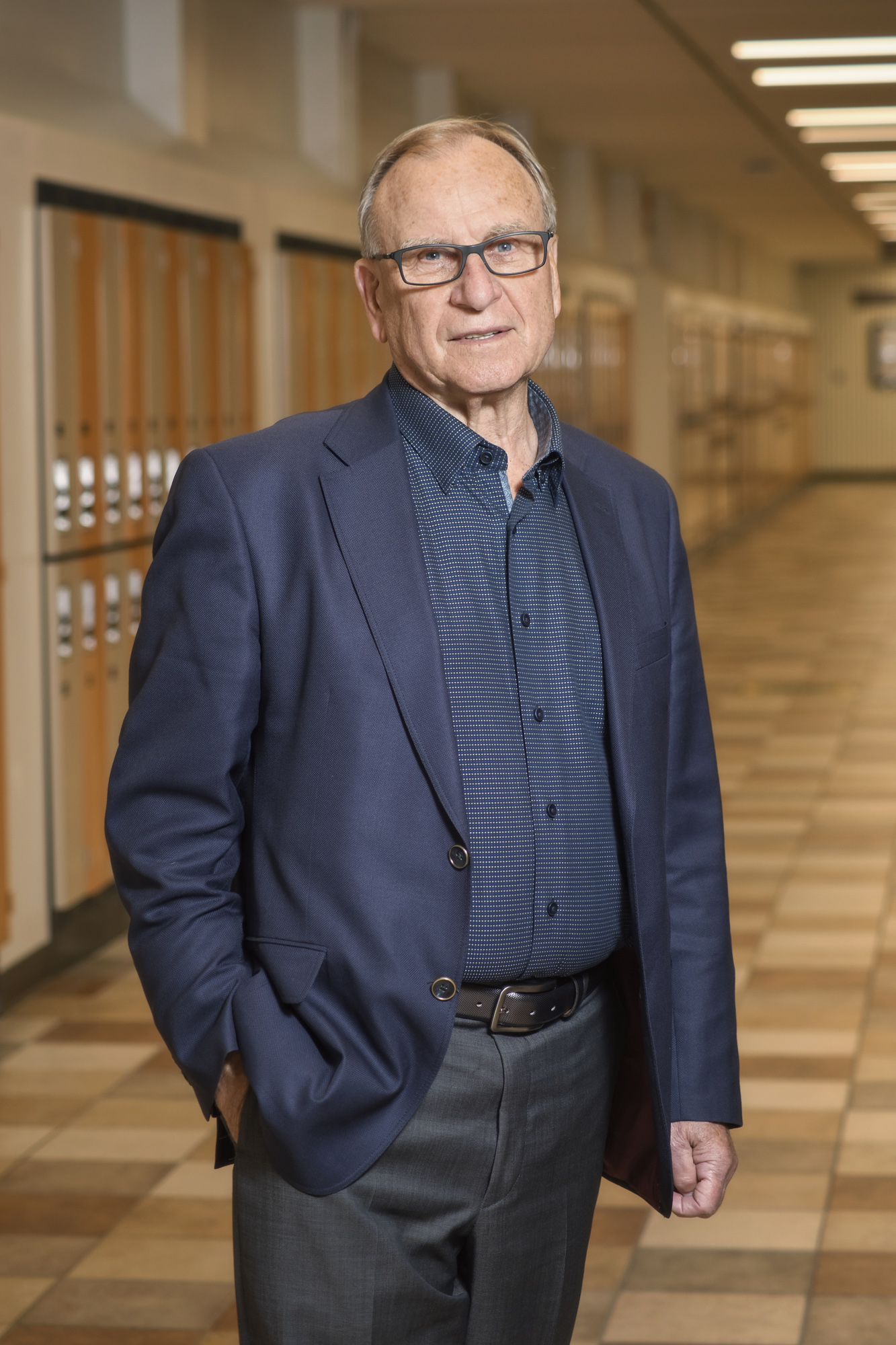
The Faculty has also encouraged women to consider careers in engineering, including by supporting the 30 by 30 initiative launched by the Association of Professional Engineers and Geoscientists of Saskatchewan (APEGS). 30 by 30 aims to increase the representation of women within the engineering profession, specifically with a goal of raising the percentage of newly licensed engineers who are women to 30 per cent by 2030. Margaret Anne Hodges BASc’88, a graduate in Electronic Systems Engineering, was the third female president of APEGS and served for three years as a 30 by 30 champion, encouraging girls and young women to think about engineering as a career.
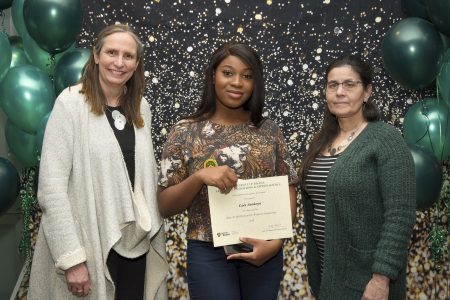
“We are past the days when girls were told they couldn’t be engineers,” Hodges says, “but we may not be past asking girls why they would want to be engineers. The profession and engineering programs need to communicate better to the public about the role engineers play in society.”
Over the past seven and a half decades, the Faculty has grown remarkably. Engineering and Applied Science students now number more than one thousand and come from every corner of the world. Also increased is the number of opportunities for students to apply their learning outside the classroom. Long-standing student groups such as Cougar Racing, Regina Engineering Concrete Toboggan Team, Engineers Without Borders, and the Institute of Electrical and Electronic Engineering, and newer groups such as U of R Robotics, and the American Society of Heating, Refrigerating and Air-Conditioning Engineers are creating opportunities for students to engage in innovative collaborations that build connections and create memories that last a lifetime. And, the Faculty’s continued involvement in EYES (Educating Youth in Engineering and Science) summer camps ensures that new generations are excited to pursue careers in science, technology, engineering and mathematics.
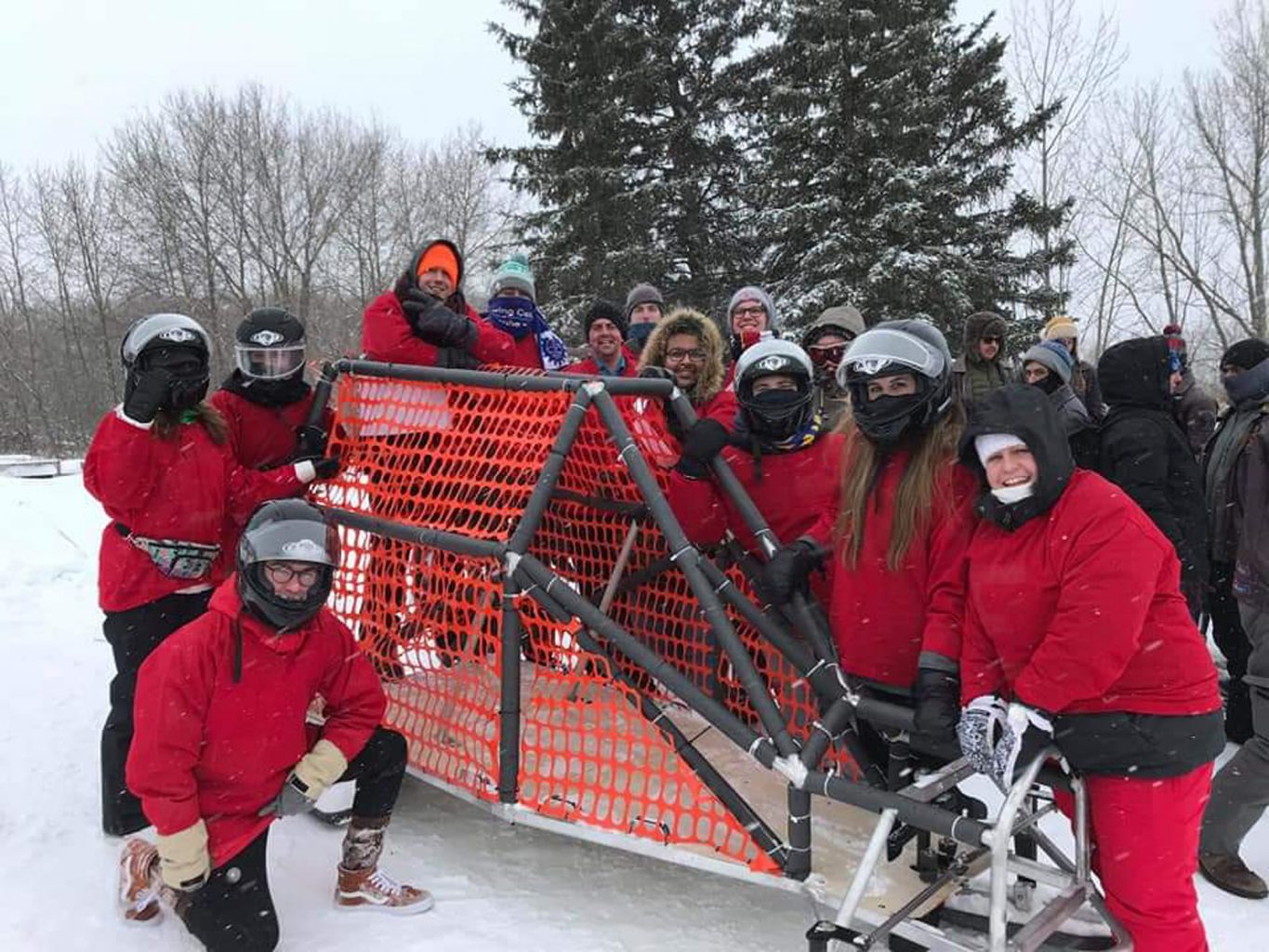
Celebrating a 75th anniversary in strange times, which look to continue for a while, raises questions about what the future holds for the Faculty and its students. Gary Bosgoed and Art Opseth are upbeat, notwithstanding all of the uncertainties. Opseth looks forward to face-to-face learning returning, because that is one way that students learn from each other, especially when it comes to working as a team. Still, he thinks the current crop of grads will be all right. “They are resilient; they are going to be fine.”
Photos by Trevor Hopkin, University of Regina Photography and courtesy of the Faculty of Engineering and Applied Science.

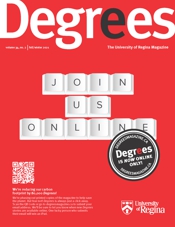

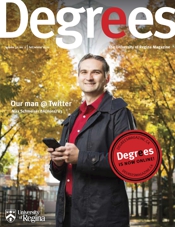


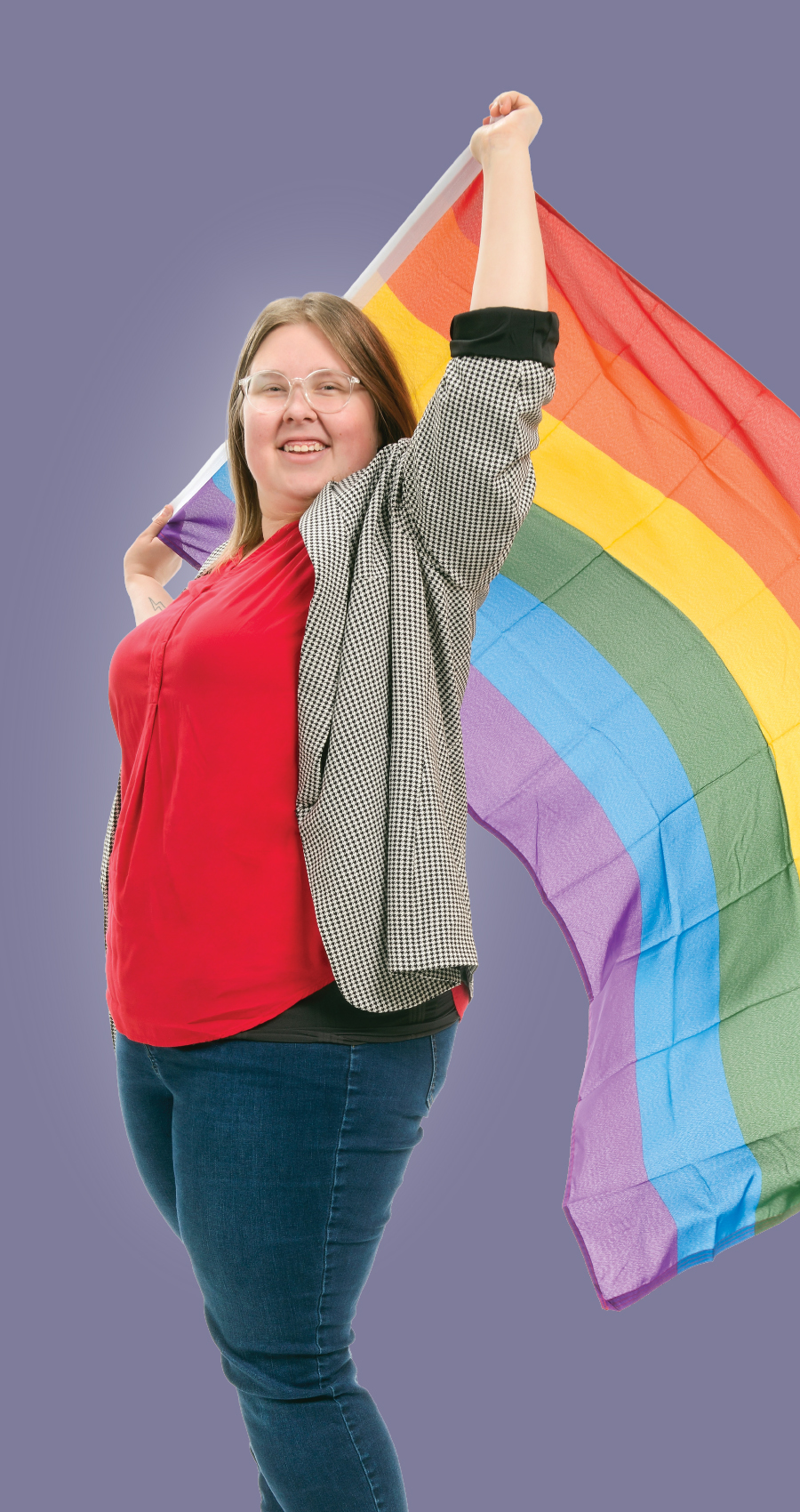
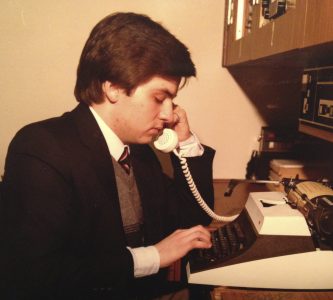 O'Shea's journalism career has spanned some 40 years. Shown here
working at CJOC Radio in Lethbridge, Alberta in 1979.
O'Shea's journalism career has spanned some 40 years. Shown here
working at CJOC Radio in Lethbridge, Alberta in 1979.
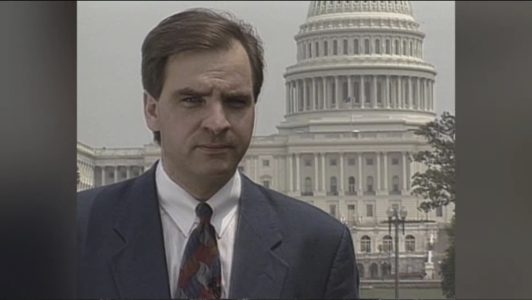 O'Shea reports have been filed from around the world including
Haiti, Beirut, Ghana, and El Salvador to name a few. O'Shea is shown here reporting from Washington D.C. in the early 1990s.
O'Shea reports have been filed from around the world including
Haiti, Beirut, Ghana, and El Salvador to name a few. O'Shea is shown here reporting from Washington D.C. in the early 1990s.
 O'Shea is an award-winning investigative and consumer reporter and is regarded as one of the most tenacious reporters
in television. He's shown here anchoring Global News in 2015.
O'Shea is an award-winning investigative and consumer reporter and is regarded as one of the most tenacious reporters
in television. He's shown here anchoring Global News in 2015.
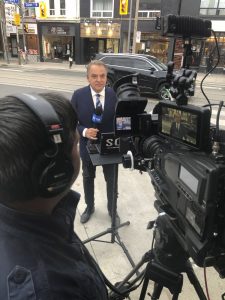 In his role as consumer reporter, O'Shea has exposed
organized crime figures, scam artists, and unscrupulous contractors at frequent risk. He was once assaulted on-air by biker
gang members who attacked him with a fire extinguisher. Shown here reporting from Toronto in 2020.
In his role as consumer reporter, O'Shea has exposed
organized crime figures, scam artists, and unscrupulous contractors at frequent risk. He was once assaulted on-air by biker
gang members who attacked him with a fire extinguisher. Shown here reporting from Toronto in 2020.